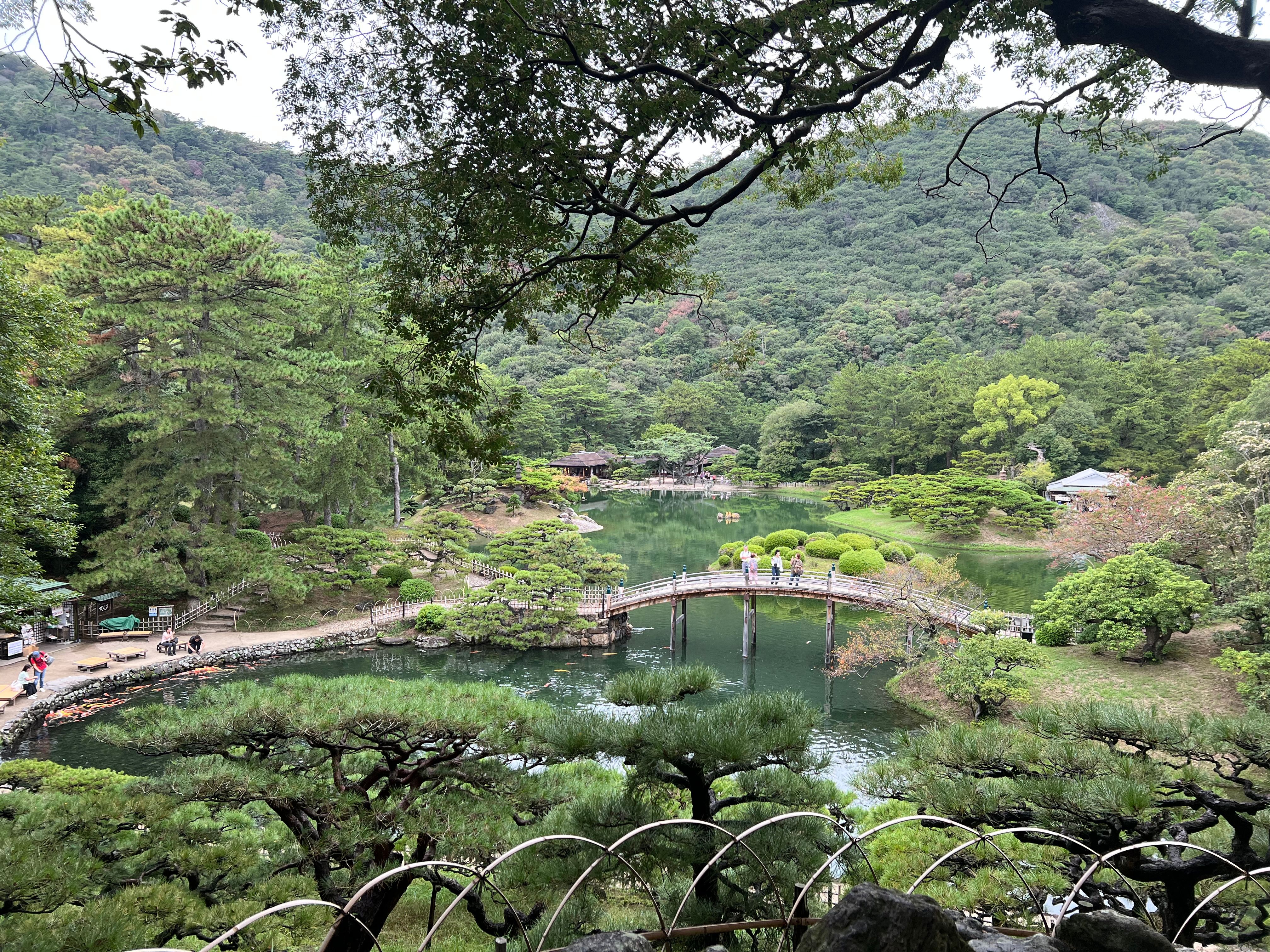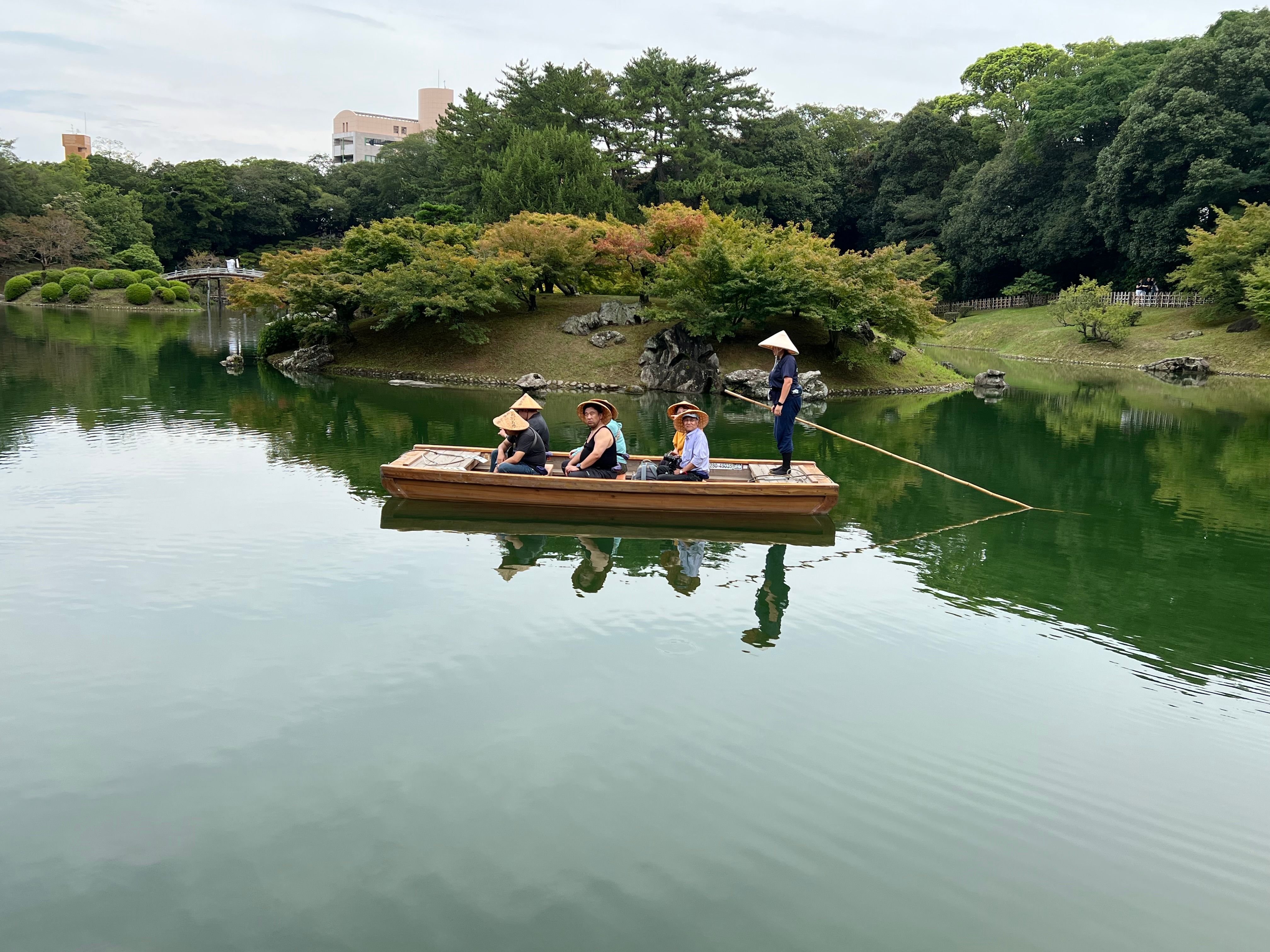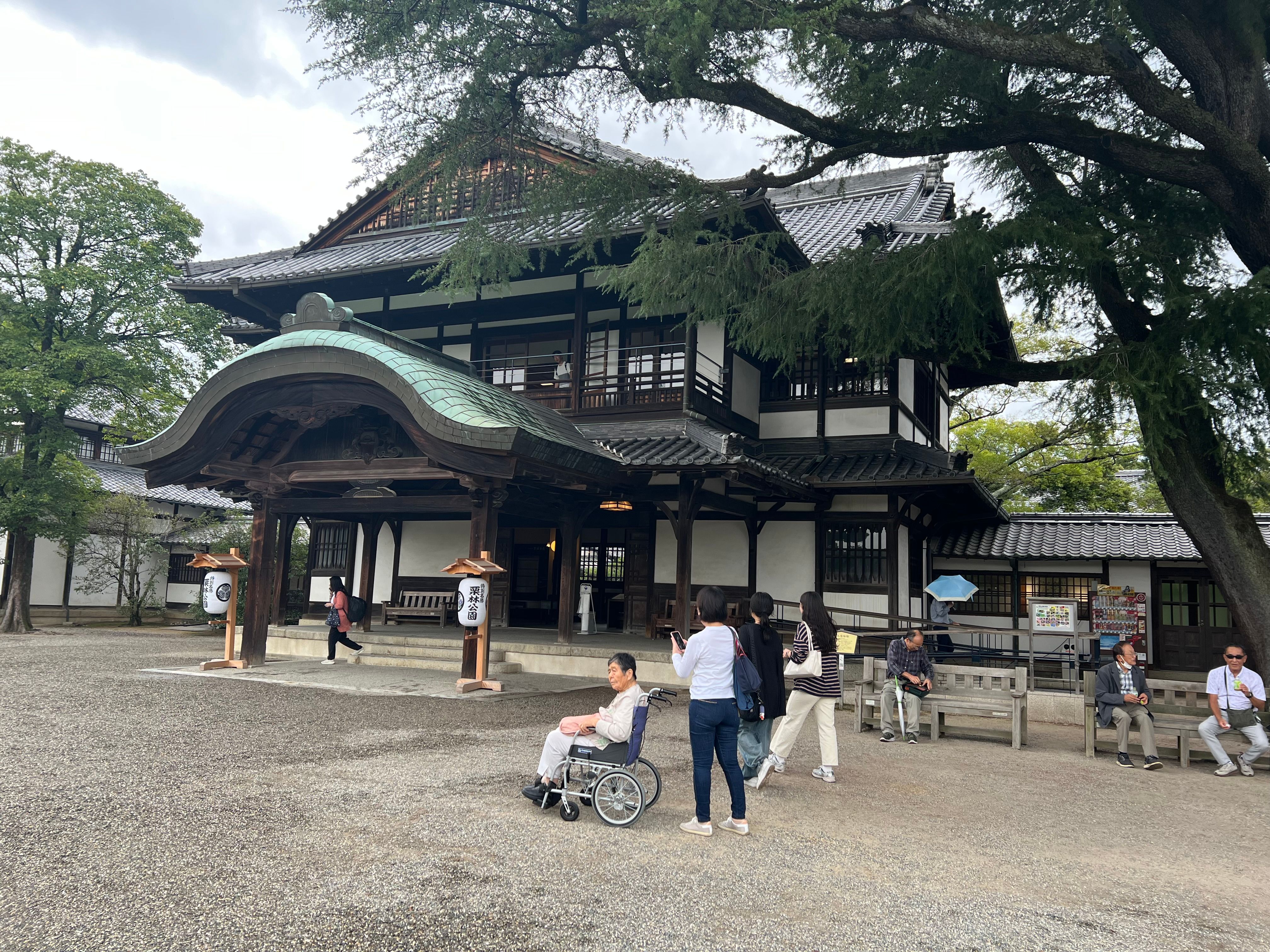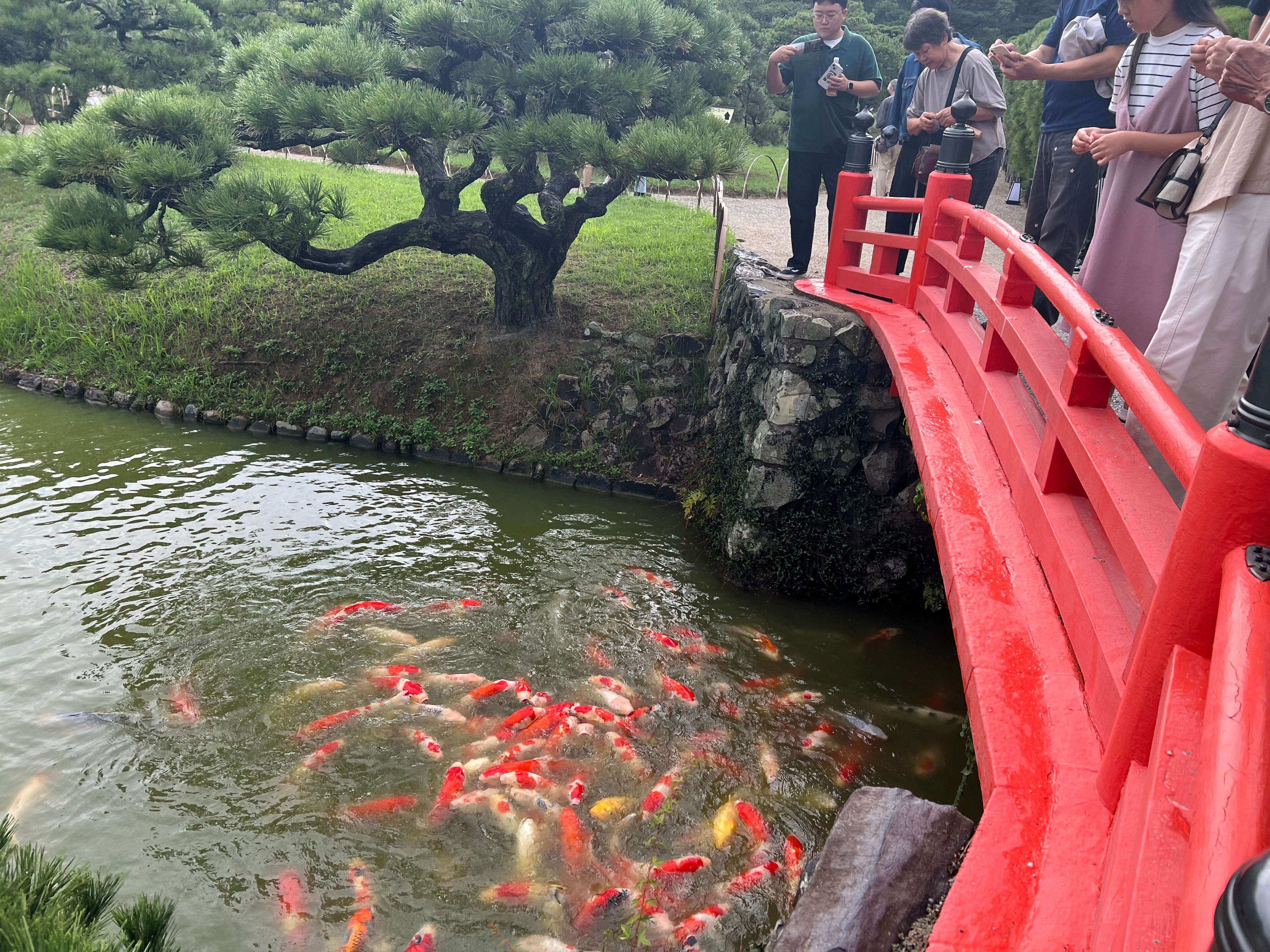

Tour guide Yoshihiko Ohata shares his knowledge about the garden with visitors.
Photo/PMN News/Christine Rovoi
Ritsurin: Exploring the timeless beauty of a Japanese garden
Nestled at the base of Mount Shiun in Kagawa Prefecture, Ritsurin Garden captivates visitors with its breathtaking landscapes and rich history.


Law expert: US boat strike controversy a lesson for the Pacific

Heartland XV coach reflects on emotional return to Sāmoa

Most New Zealand teachers set for six-figure pay after new deal struck with govt


Law expert: US boat strike controversy a lesson for the Pacific

Heartland XV coach reflects on emotional return to Sāmoa

Most New Zealand teachers set for six-figure pay after new deal struck with govt
As I walked through the south gate of Ritsurin Garden on a warm and humid autumn morning, I felt like time had slowed down.
The busy city outside the gates faded away amid still ponds, beautifully shaped pine trees, and gracefully arched bridges.
Every country, every city in the world has a special garden that residents can be proud of. But Ritsurin is not just a garden. It’s a beautiful mix of nature, art, and rich Japanese history.
Located in Kagawa Prefecture on Shikoku Island, some 500km northwest of Tokyo, Ritsurin is known as one of the best traditional gardens in Japan. It covers an area of 185 acres and features six ponds and 13 landscaped hills, carefully arranged to highlight the natural beauty of Mount Shiun, which rises behind them.
As we wandered along its winding paths, every turn revealed a picture-perfect view, which our guide Yoshihiko Ohata called 'ippo, ikkei - one step, one view'.
Ritsurin also makes use of shakkei or “borrowed scenery", he adds, where the garden design incorporates the surrounding landscape.

A view of part of Ritsurin Garden from the highest point on the site. Photo/PMN News/Christine Rovoi
Ritsurin started as a private retreat for local feudal lords in the early 1600s during the Edo period. Over the next 100 years, it was expanded and refined by the Matsudaira clan, evolving into the stunning space we see today.
In 1875, the garden was opened to the public, and in 1953, it was recognised by the Japanese government as a Special Place of Scenic Beauty, a title given to only the most significant cultural sites in the country.
What struck me most during the tour was the garden's breathtaking beauty and the deeper meaning behind its design. Every detail, such as a lone pine tree shaped like a crane or the curve of a bright red bridge, captures ideas of harmony, the temporary nature of life, and the strong connection between people and nature.

Visitors also get to experience the garden from one of the ponds. Photo/PMN News/Christine Rovoi
According to Ohata, such themes are rooted in Japanese philosophy, which is heavily influenced by Zen Buddhism and Shintoism.
We took a break at the Kikugetsu-tei, a historic teahouse in the garden overlooking the peaceful Nanko Pond that offers visitors a taste of matcha and seasonal sweets. As we enjoyed the savoury, sipped the slightly bitter tea, and admired the reflection of Mt Shiun in the pond, I realised why Ohata says that many poets and artists have found inspiration here.
Visiting Ritsurin is not just about enjoying beautiful sights; it’s also a moment for reflection and rejuvenation.
For the residents nearby, the garden is also a tourist spot. It’s an important part of their culture. Families walk its paths on weekends, photographers capture the changing colours of the seasons, and schoolchildren come here to learn about their heritage.

The Commerce and Industry Promotion Hall at the Ritsurin Garden in Takamatsu, Kagawa. Photo/PMN News/Christine Rovoi
Ohata also tells us that seasonal festivals, flower arrangement displays, and traditional music performances keep the garden alive within the community throughout the year.
With over 300 years of history, Ritsurin is one of the few gardens created by feudal leaders that has been nearly perfectly preserved. It's also one of Japan’s biggest landscape gardens outside of heavily touristed destinations like Kyoto and Tokyo, making it a national treasure that often goes unnoticed by international visitors.
In our fast-paced world, Ritsurin Garden provides something special: The simple pleasure of taking a moment to slow down, observe, and feel connected to something bigger than ourselves.
Whether you’re visiting for the first time or have come here many times, the garden invites you to return - not just to its beautiful paths, but also to yourself.

Visitors to the garden feed carp fish or koi as the locals call them. Photo/PMN News/Christine Rovoi
As I left through the north gate, I looked back one last time. The ancient pines stood silently, their twisted branches a testament to centuries of care.
I left Ritsurin Garden with photographs and an appreciation for the rich cultural and historical layers that weave into its timeless beauty.
PMN News Senior Reporter Christine Rovoi is in Japan on an Association for Promotion of International Cooperation (APIC) Japan Journalism Fellowship. During her time there, she will engage in hands-on experiences to learn about Japan's culture and history and how the country addresses challenges such as natural disasters, climate change, and sustainable living.